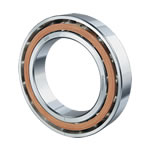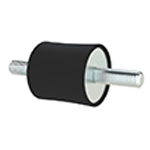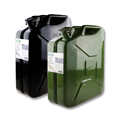Categories
Modern Warehouse
Disposable Gloves
Please wait while we load your selection
Disposable Gloves
Our disposable gloves are offered powdered or unpowdered and in a range of hand sizes and materials. The powder - corn starch - makes it easier to get tight-fitting gloves onto the hand. Talc or even flour can be pressed into service as lubricants in appropriate circumstances.
Disposable gloves can be used to protect individuals from the environment or the environment from individuals. The main decision is choosing between gloves made of nitrile, vinyl or latex. Each has advantages and disadvantages, depending upon your intended purpose and environment. Please do not assume any glove is sterile and ready for use in sensitive surgical contexts.
Nitrile gloves
Nitrile gloves are made from a synthetic rubber called acrylonitrile butadiene and tend to be bluish in colour. The flexibility of this material means gloves are ambidextrous, so no separate right- and left-handed variations are needed.
Nitrile gloves keep their qualities for at least five years from the date of manufacture provided they are stored out of direct sunlight, in dry conditions, and at a temperature of between 10?C and 30?C. Low biodegradability is an environmental drawback when it comes to disposal.
Nitrile is less likely to cause allergy problems than natural latex, provides the strongest barrier against chemicals and potential biohazards, and the best protection from electrostatic charges; therefore, it is ideal for electronics handling. Nitrile gloves are also preferable in circumstances in which punctures or tears might be dangerous, such as when handling potentially infected needles.
Vinyl gloves
Vinyl gloves are clear and manufactured from a thin layer of polyvinyl chloride (PVC) with plasticisers to improve flexibility. Like nitrile, vinyl gloves are not biodegradable. By designing them for a loose fit, each glove can fit right or left.
Vinyl gloves are suitable for food handling, catering and cleaning duties; however, they are not ideal for sensitive medical applications. Weight for weight, they are less chemically impermeable and less puncture resistant then nitrile or latex; however, they are the cheapest option and have a long shelf life.
Typical uses include light cleaning, light industry, painting, and serving food. Vinyl provides protection from static charge but is the least flexible material; therefore, these are not ideal for applications requiring manual dexterity.
Latex gloves
Latex gloves are made of high-quality natural rubber. Natural rubber still offers the most elastically-fitting, environmentally-friendly, durable and cost-effective material for most applications. Excellent flexibility makes latex ideal for handling food and in laboratory or clean technical environments in which dexterous handling is required. Flexibility also enables them to fit either hand.
Latex gloves maintain their qualities for at least five years if protected from direct sunlight and stored in dry conditions between 10?C and 30?C. Latex is less chemically resistant than nitrile, but provides good protection from most chemicals or potentially infective body fluids.
The chief drawback of latex gloves is that a substantial number of people are allergic to them. Wearing improperly cleaned latex can also cause an allergy to all latex to develop.









